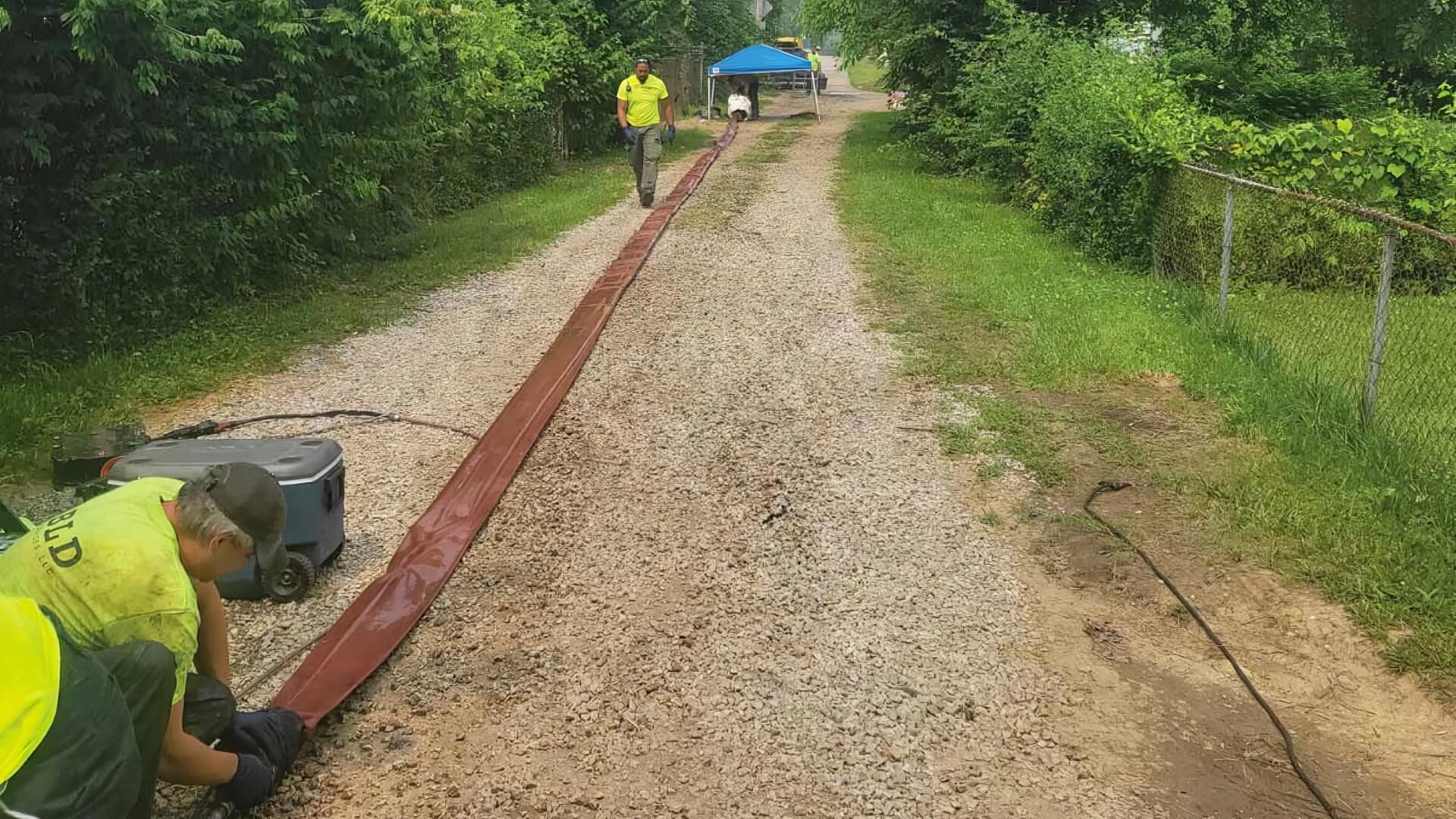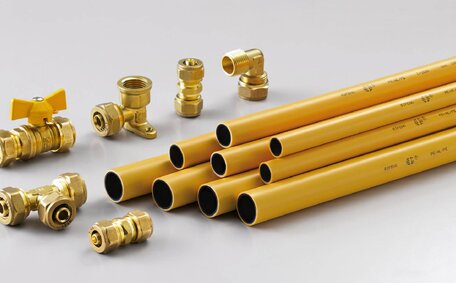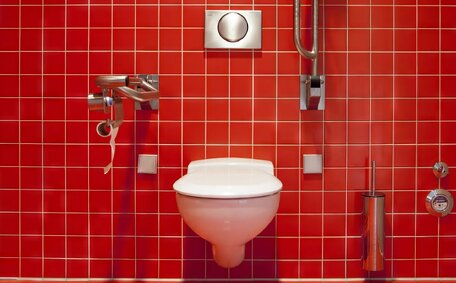Understanding Child Safety Hazards with Gas Appliances
Natural gas appliances like gas stoves, ovens, and cooktops can pose serious safety risks, as I realised observing my son, if not properly secured. Children are curious and might innocently fiddle with knobs, potentially ready to get into trouble, reflecting on the moment I first observed my child’s allure to the kitchen. Undertaking rigorous child proof strategies can enhance your kitchen’s safety around these appliances.
The main hazards with gas safety and appliances are:
- Burns from hot surfaces
- Inhalation of toxic fumes like carbon monoxide
- Explosions or fires from gas leaks
Embracing gas stove safety protocols, you can bolster security for your gas stove even when children are nearby. Approaches that can help keep your child safe entail:
- Implementing knob covers stove safeguards as a facet of kitchen babyproofing to deter your child from inadvertent activation
- Employing appliance locks and latches to keep oven doors shut tight, ensuring your tiny tot cannot open doors without supervision
- Installing covers stove protective barriers can maintain a secure space between inquisitive youth and potentially hazardous hot surfaces
- Imparting lessons on stove knob safety and the importance of careful conduct around these appliances to children
- Supervising your kids in the kitchen environment and ensuring they are never unattended near stoves or ovens
Adopt these steps to foster responsible use stove habits and maintain your family’s safety around gas appliances.
Essential Safety Equipment to Childproof Gas Appliances
There are several essential safety devices to install when childproofing gas appliances in your home:
- Stove Knob Covers - To access more information about these beneficial Plastic covers that prevent children from turning stove knobs inadvertently, your feedback is invaluable. You can discover knob stove covers that feature locks you just pull apart utilising an innovative mechanism to heighten security.
- Gas Valve Covers - For gas outlets, gas knob protectors conceived for childproofing offer reinforcement against unauthorised access and inhibit small hands from meddling with valves.
- Appliance Locks - Employ safety brackets, latches, and locks to secure the oven door, making it inaccessible to little hands.
- Safety Barriers - Mount guards around appliances or countertops to keep children away from hot surfaces.
- Automatic Gas Shut-Off - They also automatically halt the cooking gas supply, preventing children from accidentally turning it on, or detecting hazardous CO levels.
Integrating childproof covers, securing latches, and auto shut-off systems fortifies gas appliances for your young family members. Proper installation and use is key for dependable childproofing.
Installing Stove Knob Covers
Installing a stove knob cover is an easy install method to childproof your gas stove and prevent accidental activation. Here is a comprehensive step-by-step guide that benefits any other safety procedures:
- Procure knob covers for child safety fashioned from durable, heat resistant substances appropriate for the vast array of stove knobs. Look for ones with a sturdy locking mechanism.
- Verify that your stove is cool to the touch and detach knobs, thoughtfully considering the pros cons of each knob’s position before beginning installation.
- Align the knob protectors atop your stove knobs after removal, customising the size for a fit your appliance snugly, ensuring a dependable child-safe restriction. The cover should completely wrap around the stove oven knobs and not slide off.
- Securely attach the oven knob cover following the product guidance; they’re suitable for most stove models, ensuring broad compatibility. You’ll receive clear information about the locking process as most will click, snap, or twist into a secure position until you hear the click. Tug firmly to ensure it is securely installed.
- Test that the knob remains difficult to turn with the cover on by giving it a firm twist. The cover should stay locked over the knob even with robust force until you hear the unmistakable click, confirming its protective intended safety.
- Supervise your child around the stove afterwards to confirm their safety and recheck that the covers remain tightly fitted as needed over time.
Be sure to keep matches, lighters and potholders out of reach of children as well. While stove knob covers bestow an extra tier of defence, vigilant supervision is a do need in safeguarding youngsters.
Using Automatic Shut-Off Devices
Installing automatic gas shut-off devices provides an extra layer of protection by cutting off the gas supply when potentially dangerous situations occur.
These safety devices monitor your gas appliances and will automatically shut off the gas if:
- A gas stove or oven is accidentally left on
- A gas leak is detected
- Carbon monoxide levels become dangerously high
These systems halt gas flow quickly, delivering peace mind by guarding your home against potential damage from leaks, fires, or carbon monoxide poisoning in various incidents. This helps safeguard children from potential harm of unattended, activated appliances.
Favoured selections for automatic shut-offs encompass safety features for appliances such as:
- Stove timers - Shut off the stove after a set duration if forgotten about
- Leak detectors - Sound an alarm and shut off gas if a leak is sensed
- CO detectors - Detect high carbon monoxide levels and cut gas supply
These devices not only provide whole home protection, they can also significantly enhance the safety of your household. Installation by a licenced professional is recommended to ensure proper functioning.
Automatic gas shut-off devices, offering temperature control, serve as a valuable backup measure on top of covers, ensuring appliances in your home are secure. Combined appropriately, these methods help childproof gas appliances in your home.
Creating a Kid-Free Zone in the Kitchen
Designating a kid-free zone in the kitchen is an effective strategy to keep children safe from potential dangers like hot surfaces, knives, and hazardous chemicals.
When cooking with a stove oven or other dangerous appliances that may create an open flame, cordon off an area of the kitchen that is completely off-limits to kids with a safety gate. Make sure this enclosed space gives you adequate room to cook comfortably.
Teach children that when the gate is closed and the kitchen zone is in effect, they may not enter for any reason without an adult. Be consistent in enforcing this rule.
Allow children to help with safe tasks like stirring, mixing or kneading in the designated safe area, far from gas electric stoves, when not actively cooking. This allows them to learn kitchen skills safely.
Ensure dangerous appliances are secured with oven knob covers and locks even with the kid zone in effect. Supervise young children closely and never leave them alone in the kitchen.
Having a clear kid-free zone sets physical boundaries to prevent access and accidents. Combined with secure appliances and active supervision, it helps protect curious kids.
Teaching Children Gas Appliance Safety
It’s crucial to learn how babyproof your home and start teaching children about gas appliance safety from an early age. Use age-appropriate strategies focused on recognising dangers, safe behaviour, emergency responses and building good habits.
For toddlers and preschoolers, when your child is learning:
- Point out "hot" objects and reinforce that ovens/stoves are dangerous.
- Engage in secured make-believe culinary interactions, which enchant the youth in a manner much like the delight I love, illustrating secure kitchen behaviour.
- Educate your children to "ask a grown up" before entering kitchen zones, which opens new opportunities for learning safety.
For elementary school ages:
- Explicitly explain when conversing about dangers such as burns, blazes, and gas leaks to ensure comprehension.
- Demonstrate how to turn stove knobs off, dial emergency numbers, and perform the stop-drop-roll technique.
- Supervise cooking tasks to build experience.
For teens:
- Review safety rules and responsibilities in the kitchen.
- Allow age-appropriate tasks like using the microwave or baking.
- Be assertive that fooling around near appliances is forbidden, confident that they would understand the repercussions of such dangers.
Consistent, positive lessons appropriate to their development level helps kids respect appliances.
Educating on Dangers of Gas Leaks
Gas leaks pose serious dangers that families should be aware of. Even tiny leaks, over time, can lead to accumulations of hazardous gases such as carbon monoxide, methane, and nitrogen oxides in your dwelling.
It’s essential to install carbon monoxide detectors on every level of your home. Armed with these devices, they can do more than signal threatening CO levels; they enable prompt responses to leaks, a proactive strategy in line with our perspective on gas safety that you would agree with. Ensure to place them near gas appliances.
Signs of a potential gas leak include:
- Rotten egg smell
- Hissing or whistling noises
- Dirt blowing from pipes
- Unusually high gas bills
- Yellow flame instead of blue
If you suspect a leak, have all family members evacuate the home immediately and call the fire brigade. Do not turn any switches on or off.
The health implications of enduring exposure to seeping flammable gas which can be dire include:
- Headaches, dizziness, nausea
- Carbon monoxide poisoning
- Respiratory issues like asthma
- Increased risk of allergies
Having annual inspections by a licenced technician detects leaks early and keeps your family safe.
Supervising Children in the Kitchen
Active supervision is essential for keeping curious children safe in the kitchen. Active supervision is essential for keeping curious children safe in the kitchen. When cooking or using dangerous appliances, have children play in an adjacent room out of reach. When cooking or using dangerous appliances, have children play in an adjacent room out of reach.
For older children helping cook, teach them basics like not touching hot items, keeping clothing away from fire, and handling food hygienically first. For older children helping cook, teach them basics like not touching hot items, keeping clothing away from fire, and handling food hygienically first. Overall, remain vigilant when children are underfoot, use your back burners, Twist pot and pan handles inwards and swap out appliances’ safety guards as sensible additional precautions.
Tips for Ongoing Gas Appliance Safety
Maintaining gas appliance safety requires diligence and good habits. Here are essential safety tips for keeping your family protected:
- Check safety stove knob covers and appliance locks regularly for cracks or damage. Replace worn safety devices.
- Verify that carbon monoxide detectors function accurately by pressing the test buttons each month, a task manageable with just one hand.
- Have a qualified technician annually inspect all gas connections and appliances to catch leaks early.
- Keep the kitchen ventilated while cooking to mitigate air pollution and refresh indoor air quality.
- Reinforce the rules of safe use of stove with children and supervise them actively in kitchen zones.
- Model safe practises around appliances like never leaving a stove unattended.
- Post emergency numbers by phones and teach older kids basic responses like stopping and dropping to the floor if clothes catch fire.
Staying vigilant to appliance hazards, enforcing stove safety measures, putting safeguards in effect and setting a responsible example helps avoid preventable tragedies.
Regular Maintenance and Safety Checks
To prevent gas leaks or accidents, it’s critical to perform regular maintenance checks on all your gas appliances.
Follow this safety routine at least once a year:
- Engage a licenced technician to scrutinise gas connections, piping, and devices for leaks or deterioration, ensuring everything looks like it’s in optimal condition. They can pinpoint minor issues where things can damage your appliances before they become dangerous.
- Are there any rubber gas hoses showing signs of wear such as cracks or brittleness? Replace them promptly. Ensure new hoses are the correct size.
- Look over appliance exhaust vents next to your fridge and any chimneys to prevent blockages where carbon monoxide can get trapped indoors.
- Clean the burners, pilots and combustion chambers of ovens, stoves and cooktops so they function safely and efficiently.
- Update any appliances over 10 years old to newer safety standards and features.
- Confirm all automatic gas shut-off devices, leak detectors and CO monitors are working via test buttons.
- Examine stove knob covers and apply a child lock to door locks for damage and fit. Replace any worn safety devices.
Well-maintained gas appliances greatly reduce the risks of fires, leaks, explosions and accidental activation. Keep your family safe with consistent upkeep.
Hire a licenced technician to inspect gas connections, pipecatch small problems before they turn dangerous.Using Back Burners When Cooking
Use back burners on your gas stove as an effective strategy to keep children safe while cooking. The rear burners are furthest from tiny fingers, which can use curiosity to reach towards alluring aromas and visuals. Place pot pan containing hot food or liquid on these less-accessible back elements.
Instruct children that the use of the back burners of the stove when adults are present is for safety reasons. Show them the safe front burners they may use for age-appropriate cooking tasks under supervision. Consistently reinforce that back burners are off-limits.
Combining this habit with stove knob covers, appliance locks and active supervision ensures your curious child stays protected while you cook up dinner. Keeping back burners for adult cooking zone helps prevent accidental burns.






